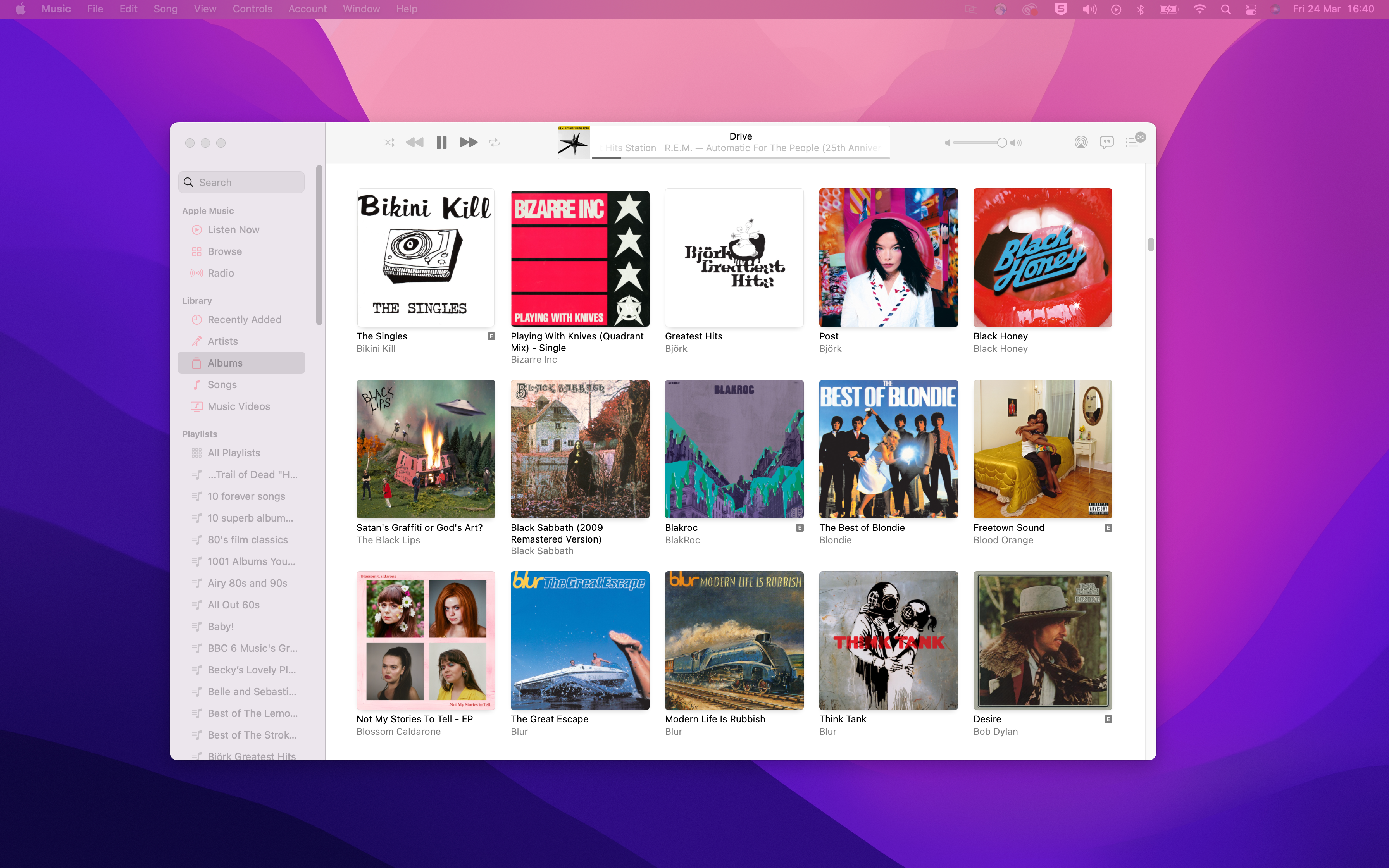Apple Music has an amazing feature that no-one ever talks about

The recent Spotify redesign didn’t fill me with confidence on the platform’s direction for the future, so it was high time that I sought out some new tunes elsewhere for a bit to see if the grass was greener over on the Apple Music side of the music streaming landscape. It’s been great so far — but one unexpected feature has really enamoured me to Apple’s platform.
And strangest of all? No-one really talks about it. Like, at all.
Apple Music has lots of excellent features that the company regularly sings the praises of. For starters, there’s the tens-of-millions of tracks available to stream in an instant from its library, the standard for all good streaming platforms. But Apple throws in some extra bells and whistles to make it stand apart from the competition: hi-resolution lossless audio comes as part of the standard subscription cost, rather than as a premium tier extra, as does Spatial Audio, a processing technique for compatible headphones and specially mixed tracks that makes it appear as if music is coming from all around you. And then there’s the recently-added ‘Apple Music Sing’ mode which strips back vocal parts and offers up the lyrics for a true in-the-home karaoke experience.
That’s before getting to all the curated stuff Apple offers. As well as the very, very good Music 1 radio station, there’s a ton of interviews (usually lead by the superb Zane Lowe) and cherry-picked playlists from giant stars including Elton John.
Curation vs AI creation
Which leads me nicely onto my favorite part of using Apple Music so far. It’s part of that curation: the simple accompanying text descriptions that sit alongside album listings in the app on both mobile and desktop.
Somewhere between a ‘behind the music’ explainer and a review, they add context to a listen, along with trivia that really taps into my obsessive music love. Did you know, for instance, that Neil Young debuted his classic ‘Harvest’ album to fellow musician Graham Nash by taking him out on a rowboat on a lake near his house and blasting the album to the pair of them over giant speakers he’d set up in his barn? I do now, thanks to Apple Music.

Barmy, excellent factoids like this are littered right across Apple Music, and it’s only possible because Apple employs real, human music experts to curate its platform. It makes sifting through Apple Music akin to visiting a record shop, or settling down with an old copy of NME magazine, or getting recommendations from a well-informed friend.
iMore offers spot-on advice and guidance from our team of experts, with decades of Apple device experience to lean on. Learn more with iMore!
Spotify does offer some similar content in the form of artist bios, provided by the Rovi music database. But the per-album write-ups are missing. And while Spotify’s AI-driven recommendations are genuinely very good, I’m starting to be able to see the 1s and 0s its code connects between artists to define my tastes. There’s something more natural, personal even, about being offered a human’s opinion of an album, and you then being left to decide whether to delve deeper based on that take.
A Classical education
My only criticism is that there aren’t more of the album descriptions across the catalogue. It’s seemingly relatively random as to which albums get the write ups, and which don’t. Why does Lana Del Rey’s brand new ‘Did you know that there’s a tunnel under Ocean Blvd’ release get one, but not Amy Winehouse’s now-classic ‘Back to Black?’ And if Neil Young’s ‘Harvest’ gets a description, why not the equally-legendary ‘Pet Sounds’ by The Beach Boys?
That’s the price of having humans doing a very human job, I suppose. There’s only so many hours in a human’s day, and if they’re spent guiding me expertly through a small corner of the Apple Music catalogue with love and care, versus an impersonal AI description, less (in this case at least) is the more I’m looking for.
It makes me particularly excited for the Apple Music Classical launch that’s just waiting over the horizon. I enjoy listening to classical music, but have to admit my knowledge of the genre starts and ends with whatever snippets of info I’ve picked up from late night listening sessions with the DJs of the Classic FM old-school radio station. If as much detail goes into the data for the classical app’s launch as exists in the current Apple Music app, you might find me next in the orchestra pit rather than the mosh pit.

Gerald Lynch is the Editor-in-Chief of iMore, keeping careful watch over the site's editorial output and commercial campaigns, ensuring iMore delivers the in-depth, accurate and timely Apple content its readership deservedly expects. You'll never see him without his iPad Pro, and he loves gaming sessions with his buddies via Apple Arcade on his iPhone 15 Pro, but don't expect him to play with you at home unless your Apple TV is hooked up to a 4K HDR screen and a 7.1 surround system.
Living in London in the UK, Gerald was previously Editor of Gizmodo UK, and Executive Editor of TechRadar, and has covered international trade shows including Apple's WWDC, MWC, CES and IFA. If it has an acronym and an app, he's probably been there, on the front lines reporting on the latest tech innovations. Gerald is also a contributing tech pundit for BBC Radio and has written for various other publications, including T3 magazine, GamesRadar, Space.com, Real Homes, MacFormat, music bible DIY, Tech Digest, TopTenReviews, Mirror.co.uk, Brandish, Kotaku, Shiny Shiny and Lifehacker. Gerald is also the author of 'Get Technology: Upgrade Your Future', published by Aurum Press, and also holds a Guinness world record on Tetris. For real.
